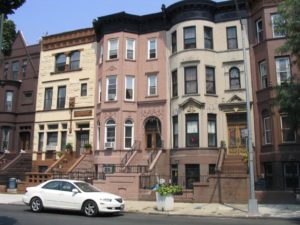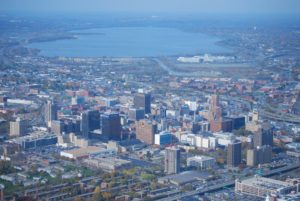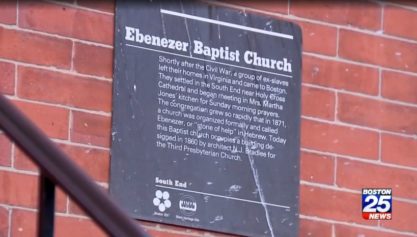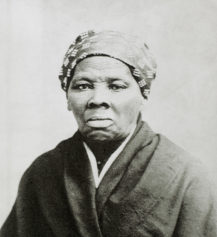
Bedstuy is one of the communities that have been significantly changed by gentrification. (Courtesy: Wikimedia)
For decades, Oakland has been the fount of Black culture in the West. The founding hub of the Black Panther Party and the hometown of Celtics great Bill Russell, former Atlanta Mayor Maynard Jackson and the Pointer Sisters, the once-majority-Black city has lost nearly 25 percent of its Black residents from 2000 to 2010, according to the U.S. Census. While this is, in part, due to the relaxing of previous barriers to integration in other areas and to class promotion within the Black community, this phenomenon can also be blamed on gentrification, or the intentional or unintentional pushing out of residents in a community through improvements to the infrastructure.
The sum of this is the slow decay of the urban African-American community as it is known today.
Gentrification and Black Businesses
In a 2014 speech, Spike Lee took aim at the rash of gentrification in New York, which has seemed to redefine Black communities wholesale. “[Why] did it take this great influx of white people to get the schools better? Why’s there more police protection in Bed-Stuy and Harlem now? Why’s the garbage getting picked up more regularly? We been here!” Lee exclaimed.
“[You’re] talking about the people’s property change? But what about the people who are renting? They can’t afford it anymore! You can’t afford it. People want to live in Fort Greene. People wanna live in Clinton Hill. The Lower East Side, they move to Williamsburg, they can’t even afford f***in’, motherf***in’ Williamsburg now because of motherf***in’ hipsters.”
On 125th Street, for example, large white-owned “big box” stores are appearing where only a decade or two before, Black-owned “mom & pop” stores stood. For many, gentrification has razed the Harlem they knew and replaced it with one distinctly less Black.
Gentrification typically happens when infrastructure or material changes to a neighborhood reach a point that the neighborhood is now attractive to residents of a higher class than that of the residents of the neighborhood. This can happen in multiple ways. In the case of Harlem, which was the capital of Black America and the home of the Black Intelligentsia, it was tax abatement and a change of zoning laws that opened up the enclave to “urban pioneers,” young whites that chose to reject suburbia and return to the city.
As a population with more disposable income moves in, property owners respond by improving their properties in the neighborhood to attract the new tenants and by raising prices on leases and rent. This, in effect, causes a squeeze-out; the residents that already live in the neighborhoods cannot afford the rising rents, forcing them to leave homes they and their families have lived in for decades.
For traditional Black businesses, the effect of this can be twofold. First, many Black businesses in gentrified areas find their leases to be illegally broken or challenged by property owners desperate to cash in. Second, those that could somehow hold on to their leases now face a customer base radically different from what they previously had that may be at odds to the products being served, increased competition and a raise in price for key services.
This has led to 30 percent of all Black-owned businesses disappearing in New York City from 2007 and 2017. Per a report by BuzzFeed, of the 25 largest cities in the United States, only Detroit and Jacksonville, Fla., have comparable numbers.
“When Black-owned businesses decline, I’m alarmed. When local residents are priced out of their neighborhoods, I’m frustrated. We have to do better,” New York City Comptroller Scott Stringer told BuzzFeed News. “We need to focus on real, community-level wealth creation. When we talk about gentrification, we can’t just focus on rising rents or increased cost of living. We also need to ensure that local residents gain access to new, local jobs.”
In New York City, African-Americans are 22 percent of the population but only 3 percent of the local business owners. A reason for the decline may be the declining Black population in the city.

Syracuse, N.Y., has endured aggressive gentrification that has had the net result of leaving the city’s core highly impoverished. (Courtesy: Wikimedia)
Syracuse and Gentrification Unchecked
Many of the traditional African-American neighborhoods that are now being gentrified or have been gentrified were, in reality, the result of aggressive racial policies and racially motivated migration patterns.
Syracuse sits in the geographic center of New York State. The city has been an important transportation hub for most of the nation’s history, with the Erie Canal being dug primarily to simplify the transferring of Syracuse salt to New York City and to the Mississippi River basin. This ready positioning made the city and its metropolitan area an industrial juggernaut in the earlier part of the 20th century and a higher-education leader in the later part, hosting more than 10 major universities and colleges within an hour’s drive of the city, including Colgate, Cornell and Syracuse universities.
Syracuse also has the distinction of being the American major city with the highest rate of extreme poverty concentrated among Blacks and Hispanics, per the Century Foundation and the U.S. Census’s American Community Survey. This concentrated poverty — the sense of being poor and growing up around other people that are poor — creates a sense of desolation: a lack of critical infrastructure such as supermarkets, more violence, declining graduation and college matriculation rates and less possibility of class promotion from generation to generation.
“Nationwide, the number of high-poverty neighborhoods and the population living in them has risen at an alarming pace. After declining by more than one-fourth, from 3,417 to 2,510 between 1990 and 2000, the number of high-poverty census tracts has risen steadily,” Paul Jargowsky wrote for the Century Foundation. “In the 2005–09 ACS data, before the financial crisis took hold, high-poverty census tracts increased by nearly one-third, to 3,310 — nearly matching the 1990 figure. By 2009–13, an additional 1,100 tracts had poverty rates of 40 percent or more, bringing the total to 4,412. The overall increase in high-poverty census tracts since 2000 was 76 percent.”
A key component to Syracuse’s plight is the lack of Black-owned businesses. Areas such as the Upper Valley, which are predominately Black, have seen a steep bleed off of nonwhite-owned businesses since 1969, when the city ranked 72nd in poverty among the nation’s largest cities.
Syracuse fell victim to gentrification run amok. In the city’s earliest years, it celebrated a growth rate that exceeded that of even New York City. However, various factors, including the discovery of salt in Louisiana and Utah, slowed growth until it was nearly stagnant by World War II. As Southern Blacks settled into the area around the 15th Ward, many of the city’s white residents headed for the suburbs. This gave the Black-populated areas the designation of “slum lands” to property developers, as it had a collapsing real estate value.
“Racial barriers have created an overcrowded condition that many experts felt may someday lead to troubles,” the Syracuse Post-Standard reported in 1954.
Exploiting this weakened view on the Black neighborhoods and hoping that taking definitive action could restart the growth rate and make Syracuse one of the largest cities in the nation, Syracuse destroyed the 15th Ward in 1956 and erected the I-81 Downtown Bridge, an elevated freeway that bisects downtown Syracuse and the Upper Valley. This destroyed the tightly held Black city community without much interference from the city’s leadership; the city was willing to do whatever state and federal officials asked to secure funding.
The sum effect was to push the Black population from the near downtown into the Southside, encouraging white flight. The very highway that was envisioned to bring residents into the city core would allow for residents to work in the city but live outside of it. The city’s population dropped from approximately 221,000 in 1950 to 144,000 as of 2014. Over the same timescale, the Black population increased tenfold.
Redlining, or the marking off of areas where African-Americans could not get home loans, made property ownership less of a possibility for Black residents, as did rental bans in specific neighborhoods. Worse, the white flight to the suburbs encouraged development around the city instead of in it. Despite the population of Onondaga County, where Syracuse is its county seat, not increasing since the 1970s, the county has seen 61 miles of new road development since 1961, 7,000 new housing units since 2000 and 12,500 acres added to the sanitary district.
A Population Displaced
While Syracuse is an example of reverse gentrification or the implementation of infrastructure improvements with the ultimate result of collapsing the social order, the impetus that led to Syracuse’s decision to willingly bisect its own communities exists in cities throughout the nation. Cities are motivated to increase their tax rolls, which will make it easier to pay for needed infrastructure repairs and social services. To do this, they must both increase their populations and bring in more affluent populations, which would drive commercial growth.
Gentrified growth tends to have adverse side effects, however. Many of the suburbs that popped up around Syracuse after the creation of the I-81/I-690 intersection developed anti-poor zoning policies. Skaneateles, one of the wealthier of the Syracuse suburbs, for example, allows no multifamily dwellings with more than four units per acre.
While the county has committed to expand county infrastructure no farther than where it already is and is participating with the city in bringing new employers into the core and promoting the Say Yes to Education program, which provides at least three years of free college tuition to Syracuse City District’s high school students, undoing the effects of gentrification may be difficult.
“The economic development in the 21st century in the world is centered in cities because of the concentration of intellectual energy that you have,” Syracuse Mayor Stephanie Miner said to The Atlantic. “You can’t have a thriving suburb without having a thriving city.”
Not every city is like Syracuse, however. Typically, gentrification is a slower, less-dramatic event that happens resident by resident, property by property. In Portland, Ore., for example, the rising popularity of Portland among hipsters created a tide of rising housing prices and de facto redlining that drove the city’s Black community out of historical neighborhoods and toward the fringes and the suburbs. With an average rent increase of 20 percent, this decidedly unfussy artist enclave is steadily becoming available only to the wealthy. Even the early “urban pioneers” that started the gentrification craze in Portland have been priced out.
This stings all the more in light of Portland’s history of racial exclusion. “If Portland is trying to be this model of sustainable, livable, walkable, 20-minute cities and it’s not racially diverse and it’s not class diverse, we’ve got big problems about what that means for anywhere else,” Lisa Bates, a professor of urban planning at Portland State University, said to Colorlines. “Is it only viable to use public resources to create a favorable environment if you get rid of all the undesirable people?”
In Detroit, the gentrification of the city core has created strident arguments over if the push to make Detroit economically solvent is disenfranchising the poor. The purchase of neglected buildings in the city’s former Cass Corridor to turn into luxury apartments and high-end retailers created a situation where there is an affluent core in the city, but everything around that core is still facing racial and socioeconomic disparities. As noted by the Guardian, residents living just outside the core are making 25 percent less than those in the core, with more than 150,000 building vacant or abandoned.
New Realities
A reality of modern-day life is that gentrification will happen. Young white professionals have rejected the notions of suburbanism and white flight and are returning to the cities in increasing numbers. It is now on city planners to find a way to make this work. The way forward is not to carve out new enclaves for the affluent in the cities or to allow displacement of the existing populace, but to find ways to promote heterogeneous communities and to encourage infrastructure improvements without raising property costs.
“Gentrification is not necessarily a bad thing, but the way in which it often occurs is, because it typically leads to displacement,” Derek Hyra, professor at American University and author of “Race, Class and Politics in Cappuccino City,’ said. “In America, we are really good at developing places instead of people in places. When investments come in to benefit areas of concentrated poverty where the people can stay in place, then the investments are a good thing. However, gentrification as a means to poverty displacement, instead of poverty relief, is destructive.”
Hyra pointed out that, even for those who are not economically displaced by gentrification, social and political displacement can still occur. As a community increasingly changes its populace, it changes its personality. What was once a vibrant Black community ceases to be in light of its Black residents and businesses being driven to other markets and other communities, only to become something else.
As many African-Americans were driven to these neighborhoods because of aggressive racial policies and economic disenfranchisement, being forced out of them now seems unnecessarily cruel. For those that are left due to subsidized housing or other means, what they are left with may be as alien and foreboding as being forced to live in a new neighborhood.
The road forward to closing the attainment gap is to increase the number of Black business and homeowners. With Black homeownership rates from 2013 to 2017 being 42.7 percent, compared to 71.8 percent for white homeowners and with just 2.1 percent of all American businesses being Black-owned, efforts must be made to bring African-Americans to the table and not to push them away.
However, as many cities have yet to fully recover from the Great Recession and as the federal government plans major rollbacks to funding to minority business development, the goal of encouraging and protecting Black businesses in the inner city may be a difficult one to achieve.
“There is a gentrification wave that has taken over the nation as we come off the Great Recession, and for the first time, it is hitting Black neighborhoods,” Hyra added. “Usually, urban investment completely bypasses Black communities, but not this time. This will bring property values up. However, the question of how to safeguard the community’s identity must be considered. These neighborhoods were the safe havens of the Black community during times of strife and great violence.
“They deserve to be saved.”


